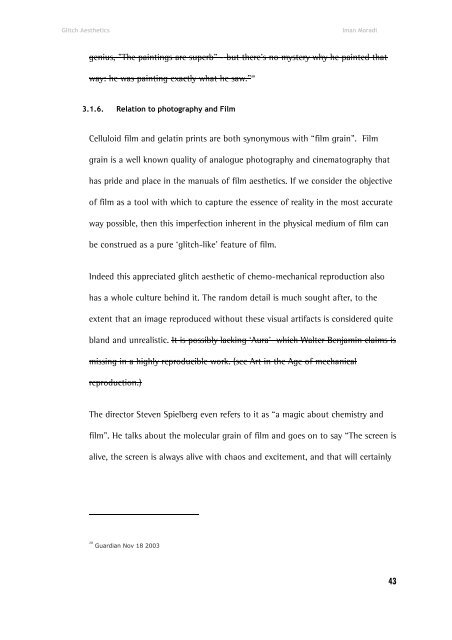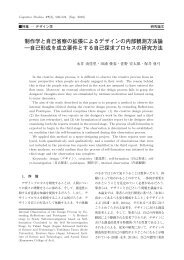Iman Moradi – Glitch Aesthetics
Iman Moradi – Glitch Aesthetics
Iman Moradi – Glitch Aesthetics
Create successful ePaper yourself
Turn your PDF publications into a flip-book with our unique Google optimized e-Paper software.
<strong>Glitch</strong> <strong>Aesthetics</strong><br />
<strong>Iman</strong> <strong>Moradi</strong><br />
genius, "The paintings are superb" - but there’s no mystery why he painted that<br />
way: he was painting exactly what he saw." 28<br />
3.1.6. Relation to photography and Film<br />
Celluloid film and gelatin prints are both synonymous with “film grain”. Film<br />
grain is a well known quality of analogue photography and cinematography that<br />
has pride and place in the manuals of film aesthetics. If we consider the objective<br />
of film as a tool with which to capture the essence of reality in the most accurate<br />
way possible, then this imperfection inherent in the physical medium of film can<br />
be construed as a pure ‘glitch-like’ feature of film.<br />
Indeed this appreciated glitch aesthetic of chemo-mechanical reproduction also<br />
has a whole culture behind it. The random detail is much sought after, to the<br />
extent that an image reproduced without these visual artifacts is considered quite<br />
bland and unrealistic. It is possibly lacking ‘Aura’ which Walter Benjamin claims is<br />
missing in a highly reproducible work. (see Art in the Age of mechanical<br />
reproduction.)<br />
The director Steven Spielberg even refers to it as “a magic about chemistry and<br />
film”. He talks about the molecular grain of film and goes on to say “The screen is<br />
alive, the screen is always alive with chaos and excitement, and that will certainly<br />
28<br />
Guardian Nov 18 2003<br />
43





